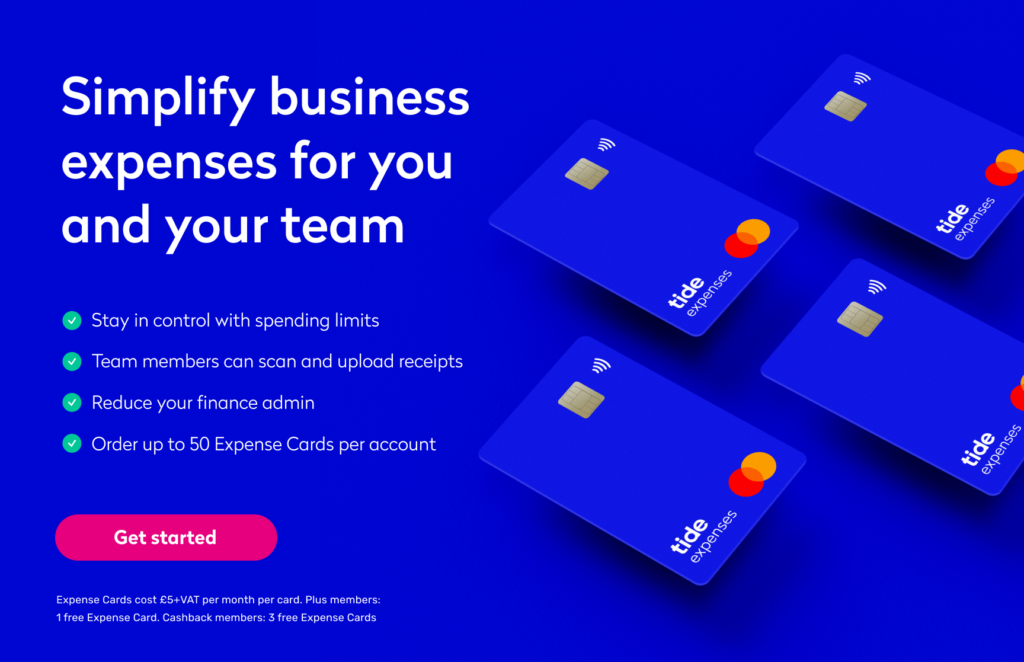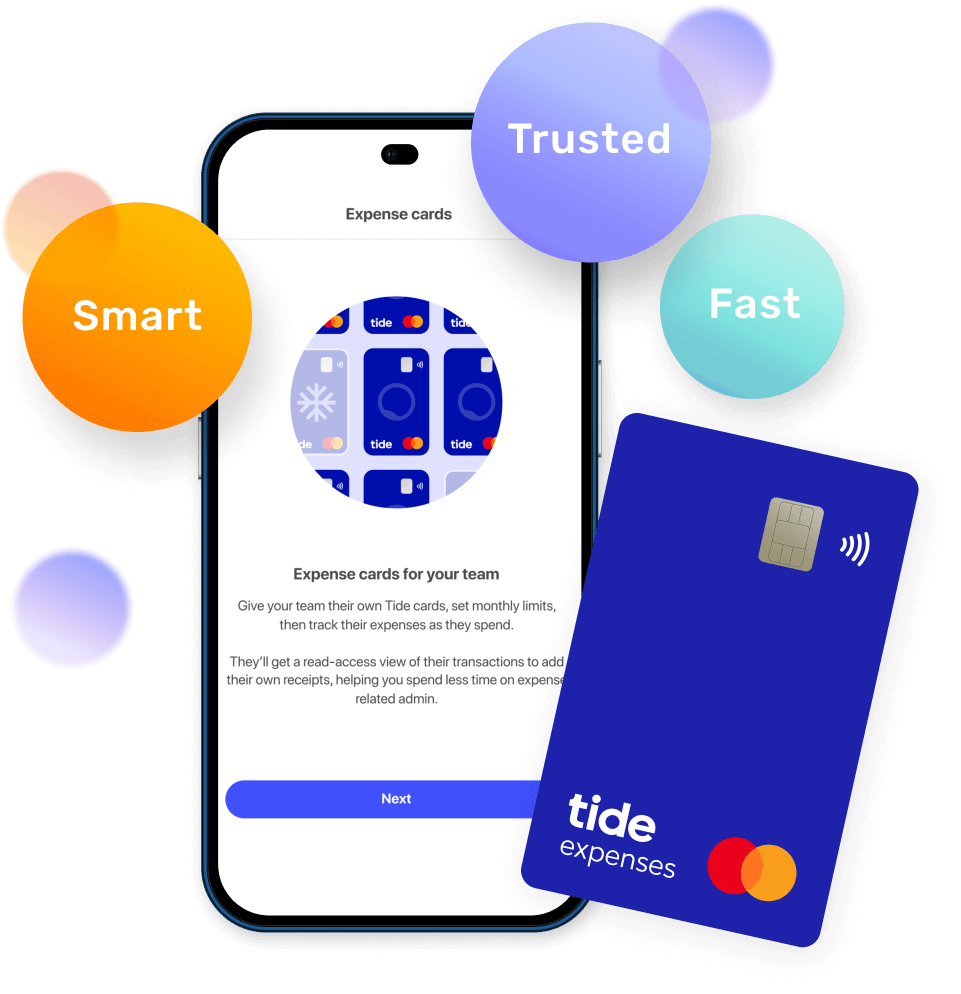
What is mileage allowance relief and how can you claim it?

As a small business owner, you want to make the most of your business expenses. Claiming tax relief on the costs of running your business is a great way to save money, stabilise your cash flow and ensure you pay taxes correctly.
Expenses aren’t just limited to the supplies and services you need to do business. You can also claim mileage allowance relief for travel you and your employees do for business purposes.
Understanding how to claim tax relief requires extra admin and thorough accounting. But with a little organisation, you can gain all the benefits of this programme and give your small business an extra financial boost.
In this article, we’ll cover what mileage allowance relief is, who it applies to and how both you and your employees can benefit.
Top Tip: Tracking and claiming business expenses is a great way to boost your small business’s financial health. It can help you save money and make sure you pay taxes correctly. Learn what expenses are and what you can claim in our guide on what expenses are and how small businesses can manage them 📣
Table of contents
- What is mileage allowance relief? A quick explanation
- What is the current mileage allowance relief in 2022?
- How to calculate mileage allowance relief
- Claiming mileage allowance relief on your self assessment
- Manage your financial health with mileage allowance relief
What is mileage allowance relief? A quick explanation
Mileage allowance relief is a tax deduction employees can claim if they’ve incurred business mileage. They can only claim it if their employers haven’t reimbursed the full amount.
Employers can offer Mileage Allowance Payments (MAPs) to employees who use their own vehicles for business purposes. HMRC sets approved mileage rates. Then employers can pay the employees for travel up to the set limits without having to report the payments for taxes (this is called an “approved amount”).
However, employers aren’t obligated to pay the MAPs. If they don’t offer payment, or offer only partial payment, employees can claim the allowed amount from HMRC.
Similarly, if you’re self-employed, you can also claim the mileage allowance at the end of the tax year (depending on your other claims). Learn more about claiming these expenses when you’re self-employed at GOV.UK.
Top Tip: Mileage isn’t the only expense you can claim. You can also get reimbursed for many other costs of running and growing your business through tax relief schemes. Learn what you can claim and how to get reimbursed in our guide on what reimbursable expenses are and how you can claim them ✅
When can someone claim mileage tax relief?
Anyone who’s using their personal vehicle for business purposes can claim mileage expenses.
Note that this excludes company vehicles. There’s a separate tax scheme for employers that covers fuel used by company cars, and company cars and fixed budgets for fuel will still be taxed.
The purpose of the mileage allowance is to align with current tax laws, which state that the costs of running a business are tax-free. Approved mileage allowance payments cover expenses in the form of road taxes, wear and tear on the vehicle, insurance and fuel.
Employees whose employers don’t pay the full approved mileage rates can claim the remainder owed through tax returns, and HMRC will make up the difference. Similarly, small business owners and freelancers who use their personal vehicles for work can claim the expense at the end of the tax year.
Top Tip: Invest in managing your expenses and developing a healthy cash flow by creating an expense log. Organising and streamlining your process this way will help you plan for long-term business growth. Learn all about expense logs in our guide on creating an expense log step-by-step 📈
What qualifies for mileage relief?
You can’t claim all business journeys as business expenses. HMRC sets out clear guidelines on what types of business trips qualify. For instance, you can claim tax relief when you:
- Meet a client for work
- Must travel between the office and another job site to finish a job
- Drive to a temporary workplace (for instance, a conference or off-site event)
For example, as the director of your company, you must attend regular directors’ meetings. You have multiple regional offices, and the meetings are held at a different office every month.
Because this is a required meeting and the workplace changes regularly, it is considered a temporary work location. So, you can claim mileage for the journey between home and the meeting each month.
Travel that isn’t eligible for reimbursement in 2022 includes situations like:
- Your standard commute between your regular place of work and home
- Personal trips from the workplace (for instance, picking up children from childcare)
- Business errands on a personal trip
For example, you ask an employee to stop and pick up a print job on their way from home to the office. It’s a regular part of their business journey and they weren’t travelling for the sole purpose of the print job. Therefore, they’re not eligible for mileage relief on this trip.
Top Tip: If you’re an employer, you’re not obligated to reimburse employees for mileage. However, it is an untaxed expense businesses can claim. Learn more about how to calculate them and when to report them in our guide on HMRC mileage rates 🚗
What is the current mileage allowance relief in 2022?
HMRC mileage rates are set, but the specific rate you claim depends on the type of vehicle you drive. Note that there’s also a change in reimbursement allowance for cars and vans after the first 10,000 miles driven for business use in the tax year.
Here are the current rates for 2022:
| Vehicle Type | First 10,000 business miles in the tax year | Business miles over 10,000 in the tax year |
| Cars and vans | 45p | 25p |
| Motorcycles | 24p | 24p |
| Bicycles | 20p | 20p |


How to calculate mileage allowance relief
Mileage allowance relief makes up the difference for any mileage expenses not paid by an employer. It’s standard practice for employers to offer MAPs, but it’s not required. And there are no requirements to pay the full amount allowed by HMRC, so some employers may opt to pay less than the allowed rate.
You can claim the difference between what your employer paid and what’s allowed by HMRC at the end of the year. It can feel a little daunting to figure out the numbers, but it’s not all that complicated when you break it down. Here’s how to calculate mileage allowance relief for your circumstances.
If you received no payments from an employer
The maths here is pretty straightforward. Anyone who didn’t receive any MAPs for the year but used their vehicle for work purposes can claim the full allowed amount.
Say you drove your car 14,000 miles for business travel over the last tax year. Using the standard mileage allowance rates for 2022, you’d calculate the total relief you can claim as follows:
10,000 x £0.45 = £4,500
4,000 (the number of business miles driven over 10,000) x £0.25 = £1,000
The total relief you could claim is:
£4,500 + £1,000 = £5,500
If you received partial payment from an employer
Employees can claim relief on any unpaid part of the mileage allowance if an employer offers less than the full rate.
For instance, if an employee drives 8,000 miles in their own car for work and their employer only pays a rate of 20p per mile, the employee is entitled to claim the remaining 25p per mile.
The mileage allowance relief this employee can claim:
8,000 (miles driven) x £0.25 (amount still eligible for the mileage allowance) = £2,000
If the same employee drove 12,000 miles in a year, the calculations get a bit more complicated. In this case, they’re eligible for a different amount for all the miles over 10,000.
Then the difference between the allowance and what was paid is only 5p per mile. Here’s how that employee would calculate that total.
10,000 x £0.25 = £2,500
2,000 (the number of miles driven over 10,000) x £0.05 = £100
The total amount this employee can claim is:
£2,500 + £100 = £ 2,600
Top Tip: Good accounting practices are critical to tracking and organising mileage and other business expenses. Learn about small business accounting and what methods work best for your business in our complete guide to small business accounting 💡
Claiming mileage allowance relief on your Self Assessment Tax return
To get your approved mileage allowance payments, you’ll need to claim them from HMRC at the end of the tax year.
If you don’t usually file a return (meaning your employer pays your taxes through the PAYE scheme), you’ll need to file a separate form. You can fill out form P87 on HMRC’s website to claim mileage if you’re claiming less than £2,500 in expenses.
If your claims are greater than £2,500, you’ll need to file a Self Assessment tax return.
Top Tip: Filling out a Self Assessment tax return is required if you’re making claims over £2,500 but also if you’re self-employed or have other income streams outside PAYE. Learn everything you need to know about registering for and filing in our complete guide on everything you need to know about Self Assessment tax returns 📌
Where to enter mileage allowance relief on your Self Assessment return
When filling out your Self Assessment tax return online, you’ll find a space for recording your expenses on page 4. Note that you can only claim expenses if you opt out of the £1,000 trading allowance.
Records you should keep for your mileage allowance relief
With either type of claim, you’ll need to supply accurate records of your travel expenses (just as you would provide them to an employer who pays a mileage allowance).
HMRC requires the following records when you make your mileage claim:
- Trip dates
- The start and end addresses (including postcodes) for each trip
- The distance travelled per trip
- The total amount of mileage allowance you have received from your employer.
You can make the record-keeping process easier by using an app with mileage tracking features. This will save you time and ensure accuracy.
Apps like Driversnote, Everlance and MileIQ automatically track expenses and generate tax-compliant records. So all you have to do is enter the information as you go.
If you’re self-employed, you might consider using an expense card specifically for tracking fuel. Tide Expense Cards make it easy to scan receipts in the Tide mobile app, and transactions sync directly with your accounting software.

Top Tip: Using apps and software is a great way to simplify all your expense management. Learn more about how the right software can help you track your expenses accurately and cut down on your admin time in our guide on how to manage employee expenses 🔖
Manage your financial health with mileage allowance relief
Claiming mileage allowance relief does take effort and organisation, but it can be a big benefit to your finances. It’s a great way to reduce your tax bills and keep more of your hard-earned income.
Make it easier to pay less tax by streamlining your accounting. Automate your business expense management by opening a free business bank account with Tide today and cut down on time spent on your accounting admin and manual expense tracking.


Photo by Jan Baborák, published on Unsplash



